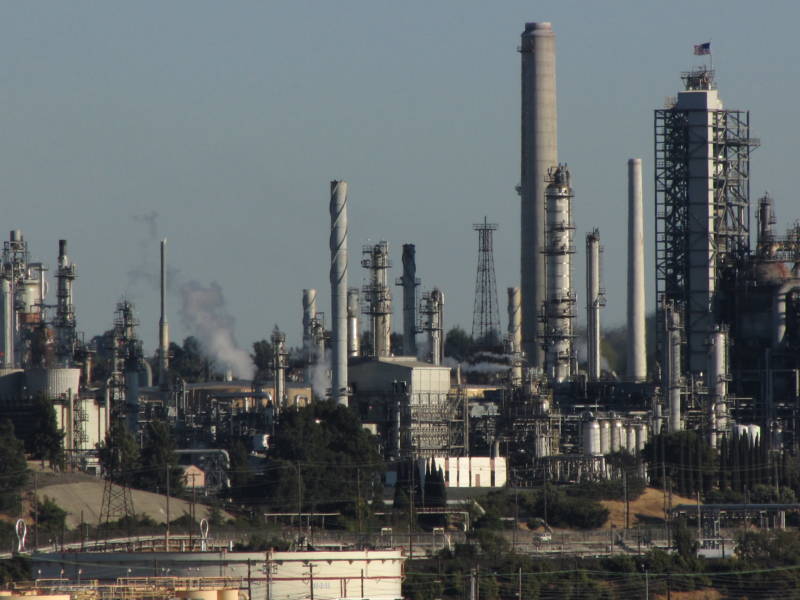Multiple Trips Needed
The Army Corps of Engineers says the current shipping channel is inefficient because it’s shallow depth limits the amount of oil that ships can carry into the Carquinez Strait. Instead, they have to “light-load” their cargo, wait until high tide, and make multiple trips.
The plan calls for deepening channels in San Pablo Bay’s Pinole Shoal and east of the strait at Bulls Head Reach from 35 to 38 feet, so that the ships can travel with a larger load, reducing the cost, number of ships and drop-offs. The Corps estimates that the dredge will save $10 million annually and increase the oil-carrying capacity of ships from 68% to 72%.
“By decreasing the cost of bringing that commodity into those facilities, then that should translate into a lower cost to the consumer,” said Pamela Castens, who is managing the project for the Corps.
Castens said the crude is shipped in to meet product demand, and the Corps estimates the modification won’t increase the amount of oil that the refineries process. “That volume is assumed to hold steady in the future because of the commodity forecast projections,” Castens said.
Greg Karras, a staff scientist with the environmental group Communities for a Better Environment, disagrees.
“The project would very likely enable full, or at least increased use of the refineries’ currently unused capacity,” he wrote in a separate letter to the Corps. Karras estimated the extra oil brought in could release between 1.8 and 7.2 million additional tons of carbon emissions into the atmosphere each year.
Tyler Earl, an attorney for the group, said the projected increase “at a time when we should be moving away from fossil fuel production” is “unacceptable.”
Environmentalists also expressed concern that the Corps’ office in North Carolina is managing the project, and that it filed environmental documents in Jacksonville, Florida rather than California.
“It doesn’t make sense for an agency on the other end of the country to be in charge of a project in San Francisco,” Kretzmann said. “I can only assume it was to hide the fact that they’re trying to push forward this terrible project.”
The Corps’ Castens said its experts are scattered around the country and will shift projects around to make them easier to manage. The agency moved this particular plan out of San Francisco in late 2016. It held a public meeting about the project in Martinez on June 11, and the public affairs office in San Francisco has listed the plan on its web site, Castens said.
Next, Castens’ team must file an amended plan in October. They hope to begin construction by 2023, but Contra Costa County and the Port of Stockton still need to file environmental impact reports with the state of California, which environmentalists will likely challenge. Also, Congress has yet to appropriate money for the project.
Stockton Wants Jobs
The Army Corps of Engineers is responsible for maintaining shipping lanes across the San Francisco Bay, a process that involves clearing millions of cubic yards of mud, sand and silt every year. For years, the Corps looked to improve shipping channels all the way from San Francisco to the Port of Stockton.
But in 2016, the Corps decided that deepening the channel between Avon and the Port of Stockton would be too expensive and could increase the salinity of the Delta. Instead, the agency limited the scope of the project to the 13-mile stretch ending at Avon.
“The Port is still in this project to eventually get to Stockton,” said Jeffrey Wingfield, director of environmental and public affairs for the Port of Stockton. “We’ll do a separate study at some point. We are about creating jobs in Stockton. This stretch has to get dug for it to get to Stockton in the future.”
This story originally incorrectly cited that the four refineries are located in Contra Costa County. The Valero refinery is located in Solano County.


